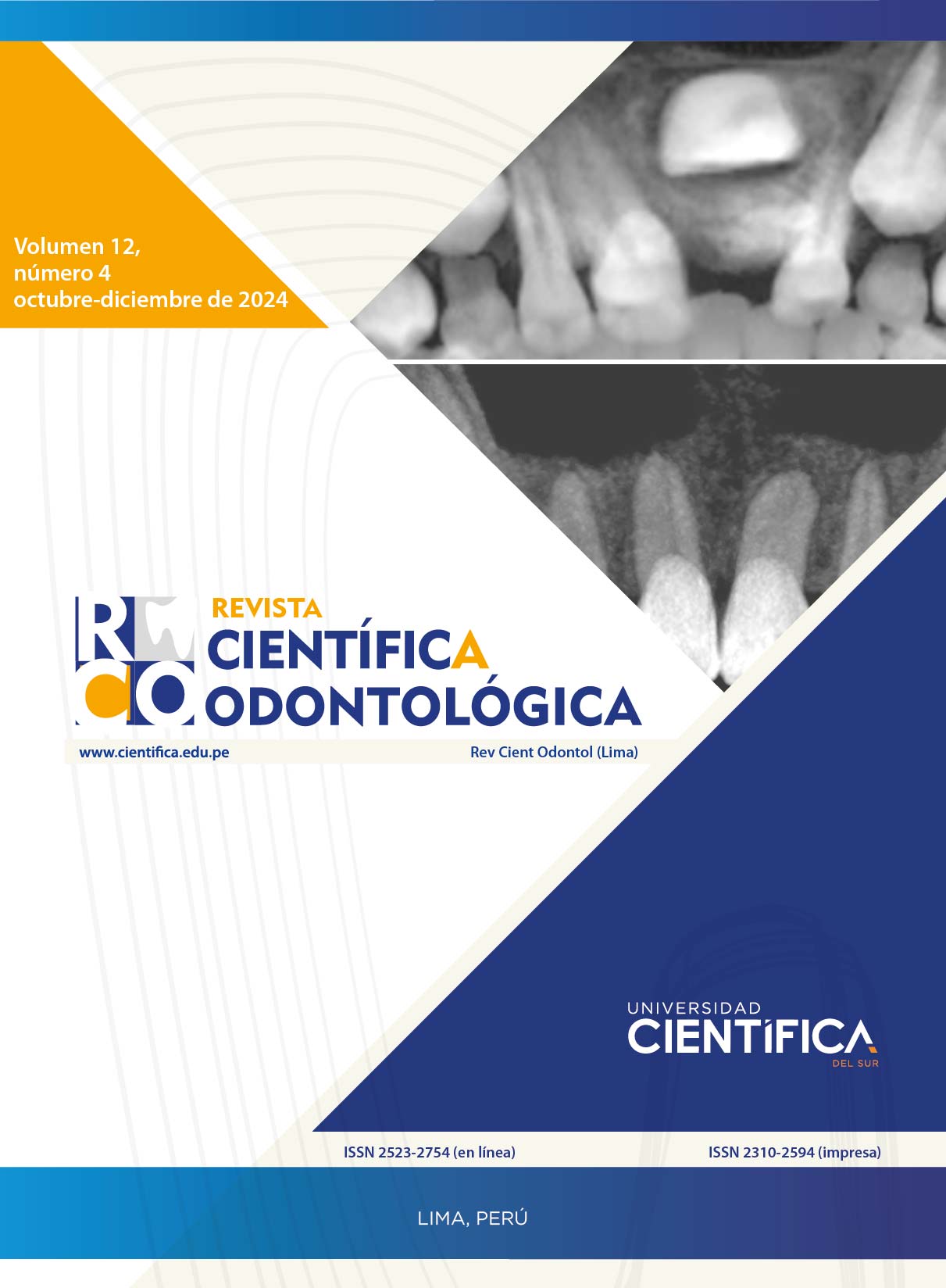CARIES EXPERIENCE AND SOCIAL INSERTION IN SCHOOLCHILDREN FROM AN URBAN POPULATION IN THE ECUADORIAN HIGHLANDS: A DESCRIPTIVE STUDY
DOI:
https://doi.org/10.21142/2523-2754-1204-2024-220Keywords:
prevalence, DMFT index, oral health, Ecuador, social epidemiologyAbstract
Objective: To analyze the relationship between caries experience and social insertion in 12-year-old schoolchildren from an urban population in the Ecuadorian highlands. Materials and Methods: A cross-sectional descriptive design was conducted in 2023 with 12-year-old students in the Bellavista parish, Cuenca, Ecuador. Caries experience was measured using the severity levels of the WHO (World Health Organization) DMFT index. At the same time, social insertion was determined through the INSOC (Social Insertion) survey. The total population included 458 data points for the caries experience evaluation phase and 422 for the social insertion phase. Pearson's chi-square and Mann-Whitney U tests were applied. Results: A percentage of 60.7% of schoolchildren had current caries. Regarding caries experience, 43.7% showed a shallow level, and 11,8% a very high level. Regarding sex, no statistically significant difference was found when comparing DMFT levels (X2, p=0.393). Regarding social insertion, schoolchildren came from the working-class and sub-salaried employee strata with 27.5% and 20.9%, respectively. No significant association was found between caries experience and social insertion in this population (X2 p=0.459). The social insertion stratum with the highest frequency of high DMFT levels was that of the children of migrants, with 27.27%. Conclusion: No significant association was found between caries experience and social insertion.
Downloads
Downloads
Published
Issue
Section
License
Copyright (c) 2024 Ebingen Villavicencio Caparó Villavicencio Caparó, María Elisa Asitimbay Jerez

This work is licensed under a Creative Commons Attribution 4.0 International License.

Este obra está bajo una licencia de Creative Commons Reconocimiento 4.0 Internacional.












